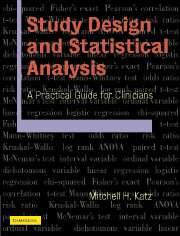Book contents
- Frontmatter
- Contents
- Preface
- 1 Introduction
- 2 Designing a study
- 3 Data management
- 4 Univariate statistics
- 5 Bivariate statistics
- 6 Multivariable statistics
- 7 Sample size calculations
- 8 Studies of diagnostic and prognostic tests (predictive studies)
- 9 Statistics and causality
- 10 Special topics
- 11 Publishing research
- 12 Conclusion
- Index
9 - Statistics and causality
Published online by Cambridge University Press: 05 August 2012
- Frontmatter
- Contents
- Preface
- 1 Introduction
- 2 Designing a study
- 3 Data management
- 4 Univariate statistics
- 5 Bivariate statistics
- 6 Multivariable statistics
- 7 Sample size calculations
- 8 Studies of diagnostic and prognostic tests (predictive studies)
- 9 Statistics and causality
- 10 Special topics
- 11 Publishing research
- 12 Conclusion
- Index
Summary
When can statistical association establish causality?
Never! Not even when you have performed the most elegant study possible and have obtained statistically significant results! Establishing causality is difficult because even after eliminating chance as the explanation of an association, you still have to eliminate confounding, bias, effect–cause, and bias.
Although association does not equal causality, there are a number of methods that can be implemented both prior to and after data collection that increase the chance that an association is causal (Table 9.1). These strategies are particularly important for non-randomized studies because of the many sources of potential confounding and bias inherent in this design.
A Prior research
Associations that have been documented in prior studies are more likely to be true than completely novel associations. In Bayesian terms, when prior studies have shown an association to be present, there is a higher prestudy (pretest) probability that the finding is true.
Of course, someone has to be the first to document a true association, and science would not progress much if we all ignored new associations. But if you are the first to uncover an association, rigorously ask yourself the questions that are listed in Table 9.1 and report the results cautiously.
For example, Habu and colleagues conducted a study to assess whether administration of vitamin K2 would prevent bone loss in women with viral cirrhosis of the liver. After the study was completed, 40 of the 43 original participants agreed to participate in a longer trial.
- Type
- Chapter
- Information
- Study Design and Statistical AnalysisA Practical Guide for Clinicians, pp. 155 - 164Publisher: Cambridge University PressPrint publication year: 2006
- 1
- Cited by



